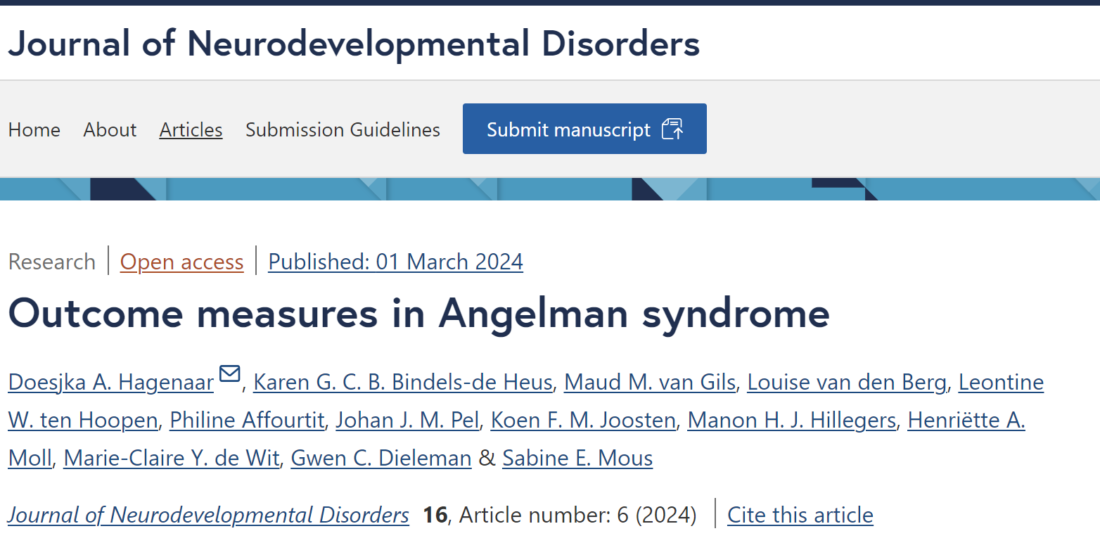The ROSA research has been published. To all participants, thank you very much!
Doesjka Hagenaar's research on the ROSA research has been published. We are pleased that everyone can now read it and would especially like to thank all participants. Doesjka's research focuses on finding suitable ways to measure the functioning of people with Angelman syndrome, with the aim of better measuring whether treatments work. If you would like to read the full publication, click here.
Background
Angelman syndrome (AS) is a rare neurological disorder characterized by intellectual disability, little to no expressive speech, visual and motor problems, behavioral problems, and a tendency to overeat and weight gain. The characteristics of AS make it difficult to measure the functioning of these children with standard clinical tests. Achievable outcome measures are needed to measure current functioning and change over time, both in clinical practice and clinical trials.
Goal
Our first goal is to assess the feasibility of different functional tests. We focus on the domain of neurocognitive functions and physical growth using the following measurement methods: eye-tracking, functional Near-Infrared Spectroscopy (fNIRS), indirect calorimetry, bioimpedance analysis (BIA), and BOD POD (air displacement plethysmography). Our second goal is to explore the results of the above measurements to better understand the AS phenotype.
Methods
The study population consisted of 28 children with AS aged 2-18 years. We defined an outcome measure as feasible when (1) at least 70% of participants successfully completed the measure and (2) at least 60% of those participants had acceptable data quality. Modifications to the testing procedure and reasons for early termination were noted. Parents rated feasibility and importance and were invited to make recommendations to increase feasibility. The results of the measurements were explored.
Results
Outcome measures obtained with eye-tracking and BOD POD met the definition of feasibility, while fNIRS, indirect calorimetry and BIA did not. The main reasons for early termination of measurements were signs of protest, inability to sit still and poor/no calibration (specifically for eye tracking). Post-calibration was often applied to obtain valid eye-tracking results. Parents rated the BOD POD as most acceptable and fNIRS as least acceptable for their child. All outcome measures were assessed as important. Exploratory results showed longer reaction times to highly salient visual stimuli (eye-tracking) as well as high body fat percentage (BOD POD).
Conclusions
Eye tracking and BOD POD are feasible measurement methods for children with AS. Eye tracking was successfully used to assess visual orientation functions in the current study and (with some practical modifications) can potentially be used to assess other outcomes as well. BOD POD was successfully used to investigate body composition.

